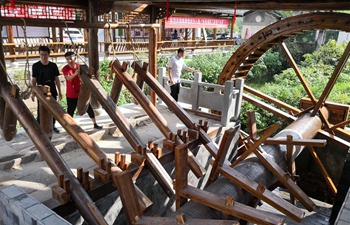SYDNEY, Aug. 28 (Xinhua) -- A new diagnostic technique, using gold-plated nanoparticles, could make the detection of cancer much cheaper and faster, according to Australian scientists from the University of New South Wales (UNSW) who developed the method.
The scientists are now able to detect very low levels of microRNAs, linked with cancerous tumours and metastasis, in blood samples of significantly lower volumes.
"What this means is the technology has the potential to determine the levels of microRNA just from a finger prick test," Professor Justin Gooding from UNSW said.
The low levels of sample needed, as well as the efficiency of the process in detecting microRNAs, makes the method much easier than was previously required, as well as more financially feasible.
"It could be orders of magnitude cheaper," Gooding said.
"Our method takes 30 minutes compared with almost 12 hours for quantitative polymerase chain reaction."
What make the new method so effective is the use of magnets to attract the microRNAs.
Scientists create gold-coated magnetic nanoparticles which latch onto a high portion of the present microRNAs, and then capture the nanoparticles and newly attached microRNAs with a magnet.
"Because the capture is so effective, we get higher sensitivities and can detect much lower limits," Gooding said.
"And since we bring them back to the electrode under a magnet, our response time is much faster."
Gooding said he would expect the technology to be available within three years, pending regulatory approvals.













